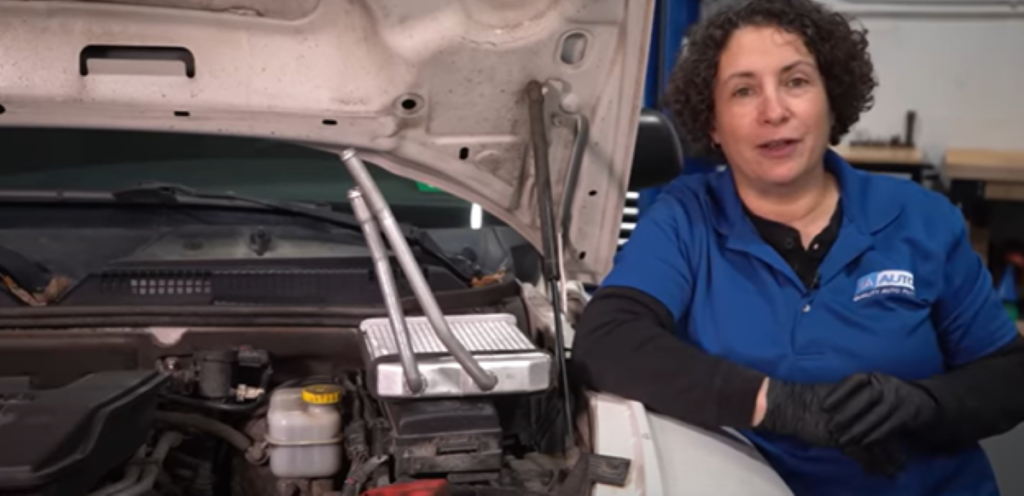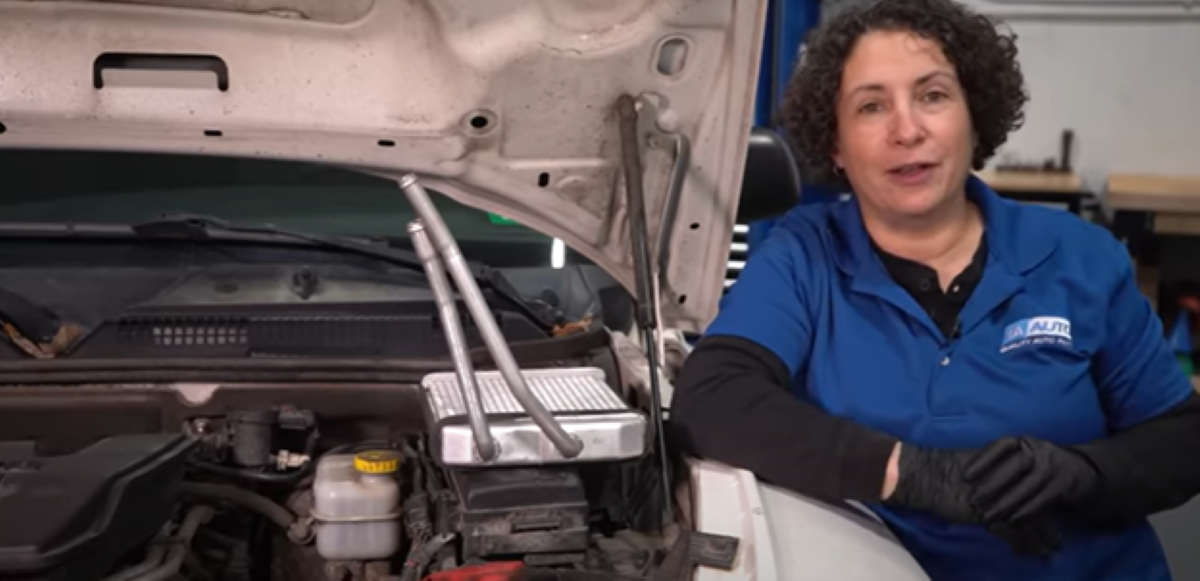If the heat is not working in your car, check out these tips to diagnose problems with the heater core, which is a common cause for problems with the heat. Learn how to inspect parts that could be the cause of the heat not working in your car with this article and video.
Use These Steps to Check a Heater Core for a Car Heater Not Working

Problems with the heat in your car not working and blowing cold air could be from a part like the blend door actuator, which is a common cause of the AC blowing cold on one side and hot on the other. But the heat not working could also be a sign of a bad heater core. Here’s how to diagnose the heater core yourself and what to do if it’s clogged.
How to Inspect the Heater Core
General steps to inspect an automotive heater core
- Find the Heater Core Hoses
Look for hoses connecting to the heater core. They’re usually entering the firewall on the passenger side, but the heater core can be placed at the center or on the driver side depending on the vehicle.

- Measure the Temperature of the Hoses
You can measure the temperature of the hoses with a digital thermometer or a by attaching a cooking thermometer.
Signs of a Problem with the Heater Core
In no particular order:
1. Cold Heater Core Hoses
If the engine is warm and the hoses are ice cold, that’s a sign of coolant not flowing. You can feel the heater core hoses by hand, or use a safer method, like checking their temperature with a digital thermometer. You can aim the thermometer at the hoses and check if they are around similar degrees Fahrenheit after 5 minutes of the engine warmed up. They should be as hot as 100 degrees Fahrenheit after 25 minutes of the engine running.
You can also find the inlet and outlet hoses by measuring the temperatures. The inlet hose that’s connected to the thermostat housing will have the same, consistent measurement.
A significant temperature difference, shown around 5:15 in the video above, is a sign of a problem.
2. Cold Air from the Vents
If cold air is blowing from the vents when the heat is turned on in your car, that’s a sign you could have a problem with your heater core. - Disconnect the Heater Core Hoses
Disconnect the heater core hoses to flush it. With the engine cool, loosen the hose clamps with pliers and pull the hoses off.
- Flush the Heater Core with a Garden Hose
If the heater core shows signs of clogging, flush it with a garden hose. Place a hose where a heater core hose is disconnected. Attach a hose to a drain pan and drain the coolant. Then attach the garden hose to the attached hose, and flush the water through the heater core in the reverse direction that coolant normally flows.
More on how to flush or unclog a heater core
- Replace the Heater Core
Replacing the heater core can take up to 10 to 12 hours. You’ll need to remove parts like the dash to replace it, and drain, refill, and bleed the coolant system.
How-to video on how to replace the heater core in a 1991to 1998 GMC K1500
More how-to videos on replacing different parts in different models
Check this in-depth guide for more detail on inspecting the heater core
Other Parts That Can Cause Problems with the Heat Not Working in Your Car
- Defective HVAC Switch
- Defective HVAC Cable
- Bad Blend Door Actuator
- Cooling System Parts
Read the Top 5 Causes of a Car Heater Blowing Cold Air: Why Does My Car Heater Blow Cold Air?
Shop Quality Auto Parts


